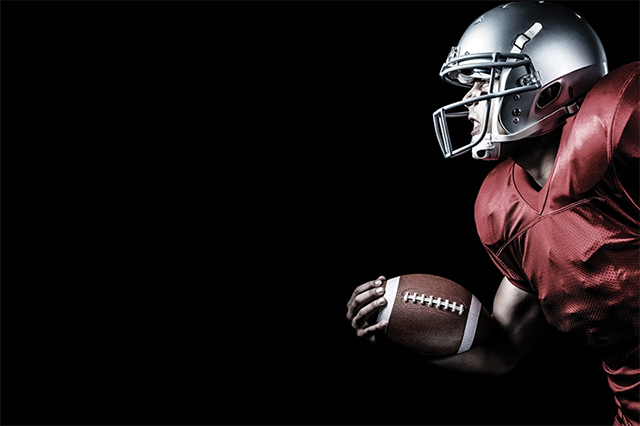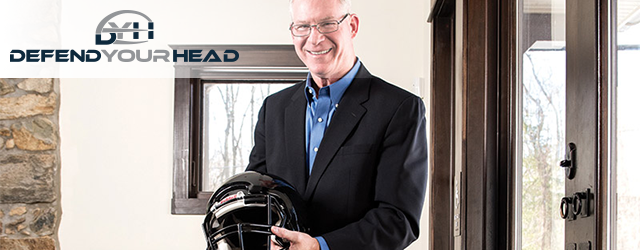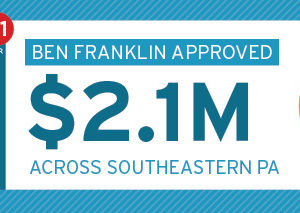Malvern’s Defend Your Head Aims to Make Football Safe
CEO John Roman is out to prevent more players from suffering from chronic traumatic encephalopathy with the ProCap.
L4-L5 spinal fusion, right-ankle and left-elbow reconstructions, three knee debridements, and one knee reconstruction. I can’t straighten one arm, and I had surgery to be able to move my hand.”
That’s just part of the toll that football took on John Roman’s body. “And I’m really not complaining,” says the Malvern resident. “Doctors can reconstruct and repair a lot of things. But it’s time that we face facts. There’s no such thing as a brain replacement.”
It’s almost miraculous that Roman’s brain survived his football career. He started playing when he was 7 years old, proceeded through high school and college, and was an offensive lineman for seven seasons in the NFL. That was from 1976 to 1983, when players wore the equivalent of tin cans on their heads and concussions were never acknowledged, let alone prevented. “If I showed you my old helmet, you wouldn’t let anyone you love wear it,” Roman says. “With football culture then, if you had a big hit, you’d say, ‘Johnny got his bell rung.’ We’d also call it ‘white lighting,’ because, when you got knocked out, you’d see white lights and stars. There was no baseline testing done on us. People would give us smelling salts, and we’d go back into the game.”
Polycarbonate helmets were introduced in 1986, but they haven’t prevented the well-documented epidemic of concussions among football players. In April 2015, the NFL settled a class-action lawsuit brought by more than 5,000 players who claimed that they weren’t informed about or protected from chronic traumatic encephalopathy, a progressive and degenerative disease caused by repetitive head injuries. Payments ranged from $1.5 million per player to $5 million for those diagnosed with Alzheimer’s or Parkinson’s related to their years of play.
In the year since that settlement, even more attention has been paid to CTE resulting from sports—and not just in football. Soccer, lacrosse and other sports have been linked to concussions. But football remains in the spotlight because of its head-to-head collisions. The NFL’s most recent report states that there were 271 concussions in 2015, a 32-percent increase from 2014. Some analysts heralded that as good news, claiming that awareness about concussions has stepped up the reporting of them. That’s definitely a glass-half-full view that focuses on diagnosis, not prevention.
Should head trauma be accepted as a side effect of playing football? Definitely not, Roman says. Better helmet technology could go a long way toward preventing concussions, and Roman believes that his new company has invented it. Four years ago, Roman became CEO of the Malvern-based Defend Your Head. Formerly called Protective Sports Entertainment, the company was founded in 1986 around a product called ProTech.

Created from specialized polyurethane foam, it’s formulated into an outer casing that fits snugly over a standard-issue helmet. Roman calls it a “soft shell.” And while that’s the industry term for it, the substance is not exactly pliable. It’s more hard than soft, and it’s dense and compact, more like a tire than a taco.
Roman claims—and has scientific testing to prove it—that ProTech deflects blows and disperses their impact. ProTech absorbs force, then an attachment system based on a split-plane surface guides that force away from the helmet.
ProTech’s slippery surface means that, as helmets collide, the blows become more glancing. It seems obvious that wrapping a helmet in ProTech would provide exponentially greater protection for players’ heads.
So why hasn’t this been done before? Well, it has. ProCap was a soft-shell helmet add-on that preceded ProTech into the marketplace—or tried to. In 1990, Buffalo Bills safety Mark Kelso donned a ProCap on orders from the team’s trainer. Kelso had four concussions in two years, which reportedly led the Bills’ trainer to give him an ultimatum: Wear ProCap, or don’t play. Kelso wore it and spoke publicly about ProCap preventing further concussions and extending his NFL career.
But it didn’t look cool. The ProCap made Kelso look more like a bobblehead than a gladiator. Nor did it cover the entire helmet—and that’s one of the first design changes Roman instituted when he joined Defend Your Head. “The product design only covered the crest of the helmet,” Roman says. “We redesigned the protection to go from 35- to 40-percent coverage to 95 percent.”
Read the full article here.





